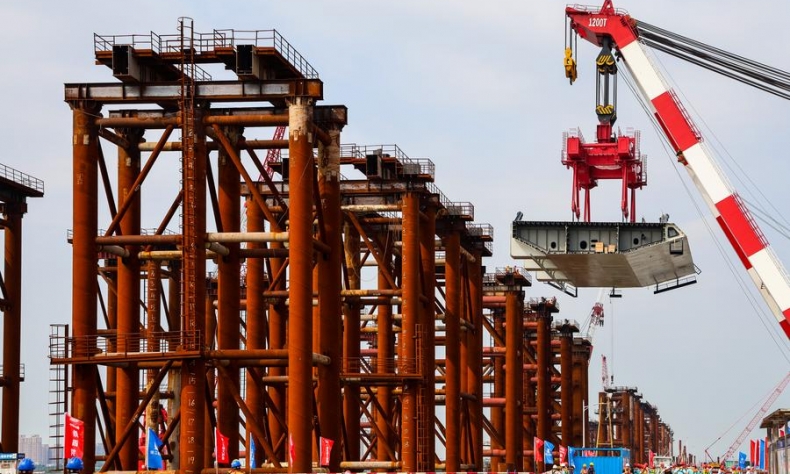The 15th Five-Year Plan: China’s Strategic Blueprint for Global Leadership in the New Era

Through innovation, green development, coordinated regional advancement, reform and opening-up, and common prosperity, the 15th Five-Year Plan represents China’s strategic blueprint for global leadership.
As China concludes the successful implementation of the 14th Five-Year Plan covering the years 2021-2025 and enters the decisive stage of building a modern socialist country, it does so with a powerful legacy that has shaped its development for more than seven decades. Since the first Five-Year Plan was launched in 1953, China has continuously planned its national development through strategic cycles, adapting to domestic realities, global changes and technological revolutions. This long-term consistency is not merely administrative, it is civilizational. It reflects a governing philosophy that sees development as a disciplined process of continuous improvement, guided by vision rather than reaction. The achievements of the 14th Five-Year Plan—rapid economic recovery amid global headwinds, breakthroughs in innovation, advances in green development and improved livelihoods—have laid a solid foundation for the next phase. It is against this backdrop that the 15th Five-Year Plan emerges not as a simple continuation, but as a transformative blueprint designed to propel China toward becoming a global leader in innovation, sustainability and high-quality development.
The 15th Five-Year Plan, covering the years 2026 to 2030, represents a critical strategic window during which China will move from consolidating its strength to shaping a global future of modernity. It is explicitly framed around one core mission: to firmly anchor high-quality development as the primary task of the nation. This signals a historic shift from quantitative expansion to qualitative excellence, from industrial catch-up to technological leadership, and from domestic revitalization to global standard-setting. The plan outlines a cohesive strategic framework built on innovation-driven development, modernized industrial infrastructure, regional coordination, green transformation, reform and opening at a higher institutional level, and a deepened commitment to people-centered progress.
At the heart of the plan lies innovation as the first driving force of national rejuvenation. It calls for strengthening national strategic science and technology capabilities, with a strong focus on frontiers such as artificial intelligence, quantum information, life sciences, deep space exploration and deep-sea technologies. China will accelerate the construction of world-class research infrastructure clusters and optimize its national laboratory system to ensure breakthroughs in critical bottleneck technologies. The plan sets an ambitious goal of raising R&D expenditure, further cementing China’s position among the world’s top innovation-driven economies. It recognizes that enterprises—not institutes alone—must be the principal engines of innovation, advocating for deep integration between research institutions, universities and the private sector. Intellectual property creation and protection is elevated to a strategic pillar, signaling that innovation capacity will be both homegrown and safeguarded.

The plan further lays out an ambitious agenda for industrial modernization. Far from abandoning its real economy base, China will deepen its manufacturing strengths by promoting high-end, intelligent, and green development. Traditional industries will be upgraded through full-chain digitalization, while strategic emerging industries—such as biomanufacturing, new materials, high-end equipment, aerospace and marine technologies—will be expanded at scale. Most notably, the plan looks beyond today’s industries to the future, with forward-looking deployment in fields such as brain-inspired intelligence, gene editing and extraterrestrial resource utilization. The integration of the digital economy and the real economy is a central theme. China aims to develop a globally leading digital infrastructure, promote industrial internet applications, and foster a regulated and vibrant platform economy. This vision positions China not only to participate in the fourth industrial revolution, but to guide its evolution.
Regional development is another cornerstone. The 15th Plan deepens national strategies such as the Beijing-Tianjin-Hebei region, the Yangtze River Economic Belt, the Guangdong-Hong Kong-Macao Greater Bay Area and the Yangtze River Delta integration. It promotes synergy in these regions to enhance economic resilience and innovation spillovers. At the same time, it emphasizes balanced national development by accelerating the revitalization of the northeast, advancing the rise of central China, consolidating gains in poverty alleviation, and promoting modernization across western regions. A particularly notable feature is the emphasis on county-level urbanization. By developing the county as a core unit of economic activity and public services, China is redesigning its spatial development model to integrate urban and rural areas, creating new engines of growth and social mobility.
In the realm of green development, the 15th Plan establishes a clear path toward carbon peaking and advances the transition to a carbon-neutral future. It commits to a dual-control system on carbon emissions in both volume and intensity. The document calls for the construction of a new energy system with non-fossil fuels at its core, expanded investment in renewable energy infrastructure and large-scale adoption of clean technologies in industrial, construction and transportation sectors. It also emphasizes ecological restoration and biodiversity protection as integral components of economic policy. This vision places China among the world’s leading advocates and practitioners of ecological civilization, demonstrating that sustainability is not a constraint on development, but a driver of future competitiveness.
Reform and opening-up form another strategic pillar. The plan does not view opening-up merely as the flow of goods or capital, but as a deeper integration into global systems of rules, standards, and governance. By committing to expand institutional opening in areas such as regulations, management and standards, China signals its intent to actively shape the frameworks of international economic order. The Belt and Road Initiative will be further aligned with high-quality development standards, prioritizing sustainable, technology-driven and innovation-based cooperation. At home, reform will focus on creating a high-standard market system, deepening factor market reforms, optimizing the business environment, and enhancing market confidence. Together, these measures demonstrate that China remains open to the world, but on a higher level defined by quality, resilience and mutual benefit.

A defining feature of the 15th Five-Year Plan is its people-centered approach. The plan recognizes that development is meaningful only when it improves the lives of the people and advances common prosperity. It seeks to strengthen employment policies, particularly for youth, recent graduates, and emerging occupational sectors. It aims to expand the middle-income group through better wage structures, social protections, and public service access. China’s response to demographic challenges is articulated through proactive aging strategies and the development of a “silver economy,” turning challenges into new economic frontiers. Healthcare reform will deepen to expand access to quality medical resources and ensure regional equity. The plan also emphasizes cultural development, recognizing cultural confidence as a core strength of national rejuvenation.
In the domain of governance, the 15th Plan elevates state capacity as an essential force in modernization. It calls for improving law-based governance, strengthening administrative efficiency, enhancing national security systems, and refining mechanisms for social governance. It reinforces the leadership of the Communist Party of China as the central guarantee of successful implementation. This linkage between strategic planning and governance innovation demonstrates that China’s modernization model is not simply economic—it is institutional and civilizational in nature.
What makes the 15th Five-Year Plan particularly significant is its forward-looking nature. It is not merely a plan for the next five years; it is a decisive chapter in China’s 100-year journey toward national rejuvenation. By the conclusion of this plan in 2030, China aims to be on the cusp of realizing its 2035 goals of basically achieving socialist modernization. This means that the 15th Plan is the transition point—from building a foundation to completing the framework of a modernized nation that is strong, innovative, green, culturally confident, and globally engaged.
On the international stage, the 15th Five-Year Plan sends a clear message. It demonstrates that China is not turning inward but seeking to contribute more actively to global prosperity and stability. As some parts of the world struggle with policy inertia, political polarization, and short-termism, China offers a model of strategic consistency, long-range foresight and people-centered governance. The continuation of its planning tradition into the 15th cycle is a reminder that China’s rise has never been accidental. It has been guided, tested, adjusted, and propelled by one of the most sophisticated planning systems in human history.
In this new era, China is not only pursuing modernization—it is helping to redefine it. Through innovation, green development, coordinated regional advancement, reform and opening-up, and common prosperity, the 15th Five-Year Plan represents China’s strategic blueprint for global leadership. It is a plan not only for China’s future, but for the future of global development.
The author is president of the America China Public Affairs Institute.
 Facebook
Facebook
 Twitter
Twitter
 Linkedin
Linkedin
 Google +
Google +










